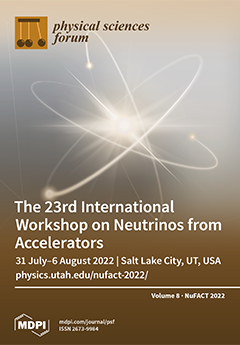Open AccessProceeding Paper
ARIADNE+: Large Scale Demonstration of Fast Optical Readout for Dual-Phase LArTPCs at the CERN Neutrino Platform
by
Adam John Lowe, Pablo Amedo-Martinez, Diego González-Díaz, Alexander Deisting, Krishanu Majumdar, Konstantinos Mavrokoridis, Marzio Nessi, Barney Philippou, Francesco Pietropaolo, Sudikshan Ravinthiran, Filippo Resnati, Adam Roberts, Angela Saá Hernández, Christos Touramanis and Jared Vann
Cited by 6 | Viewed by 1491
Abstract
Optical readout of large scale dual-phase liquid Argon TPCs is an attractive alternative to charge readout and has been successfully demonstrated on a 2 × 2 m active region within the CERN protoDUNE cold box. ARIADNE
uses four Timepix3 cameras imaging the
[...] Read more.
Optical readout of large scale dual-phase liquid Argon TPCs is an attractive alternative to charge readout and has been successfully demonstrated on a 2 × 2 m active region within the CERN protoDUNE cold box. ARIADNE
uses four Timepix3 cameras imaging the S2 light produced by 16 novel, patent pending, glass THGEMs. ARIADNE
+ takes advantage of the raw Timepix3 data coming natively 3D and zero suppressed with a 1.6 ns timing resolution. Three of the four THGEM quadrants implement readouts in the visible light range through wavelength shifting, with the fourth featuring a VUV light intensifier, thus removing the need for wavelength shifting altogether. Cosmic ray reconstruction and energy calibration were performed. Presented is a summary of the detector setup and experimental run, preliminary analysis of the run data and future outlook for the ARIADNE program.
Full article
►▼
Show Figures



